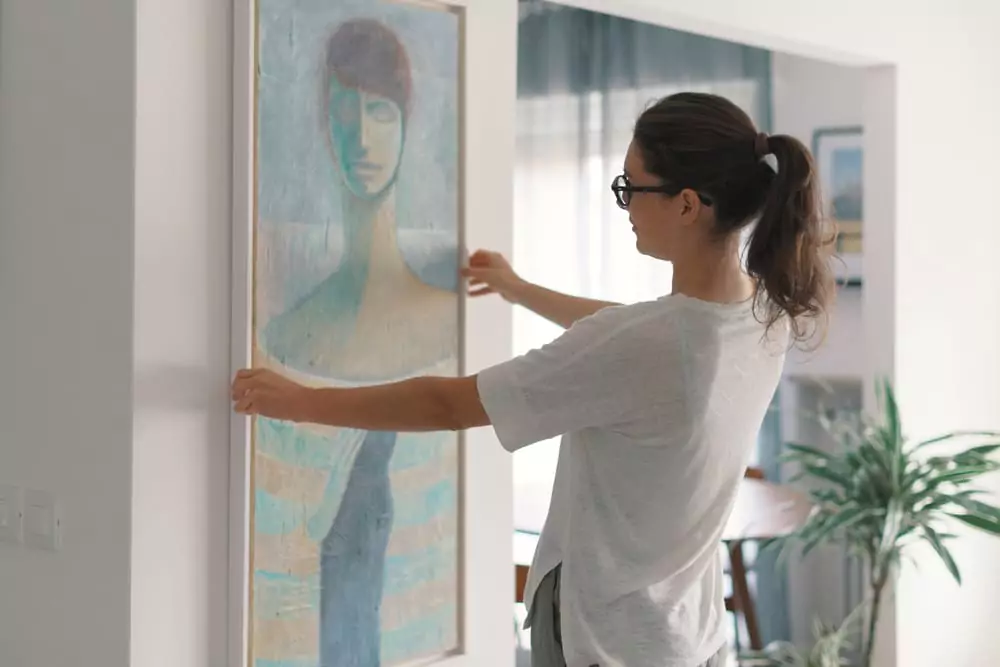
Whether you’re collecting or an artist organizing your studio, it’s important to know the proper way to store your artwork. Whether you’re storing oil paintings, sketches, watercolor paintings, prints, and more—here are eight tips for storing artwork while moving, redecorating, or organizing.
Before you start putting artwork in storage, take the time to clean each piece to prevent the buildup or solidification of grime or dust. Rather than using soap and water, which can damage art, use a duster cloth with gentle strokes. If your artwork needs more extensive cleaning, it’s best to take it to an art restorer rather than trying to clean it yourself.
Different pieces have different needs for handling, so make sure you have the right supplies to pack paintings and artwork. Consider using painter’s tape, packing paper, and mirror/picture moving boxes to prevent dents, scratches, or broken glass for framed artwork. Wrap unframed canvases with acid-free paper because common DIY packing materials—like newspaper—can stain the surface. If you want to go the extra mile, complete your packing process by labeling and cataloging each piece by artist, value, or medium to more easily find in storage.
When deciding where to store your art collection—whether in your home or in a storage facility—try keeping it out of direct sunlight. The ultraviolet rays in sunlight damage art by causing pigment to fade over time, paper to yellow more quickly, and resin to become unstable. If you don’t have a dark room, consider storing your art pieces in a dark cabinet or solander box.
When storing artwork, it’s important to be mindful of the environment’s temperature and humidity levels. Storing art in basements, garages, and attics may seem like a good idea, but their inconsistent temperatures and humidity levels may encourage mold and mildew, expand, or shrink the artwork. The ideal environment for storing artwork is between 70 and 72 degrees with 50% humidity—and is the museum standard. If your home can’t meet this criteria, a climate-controlled storage unit is a great alternative! By maintaining a consistent temperature range or designated humidity levels, climate control can help protect your art collection in storage.
Laying paintings flat can also be risky since rips and tears may occur if something falls on the canvas. Alternatively, stacking paintings in a pile may damage them by putting too much weight on the art. Storing artwork upright is usually the safest option, but if you must store art horizontally, use protective storage measures like painting racks or solander boxes.
When storing artwork, try not to let pieces directly touch. Storing pieces pressed together can cause unwanted chemical reactions and creasing. Not to mention, canvases with softer materials like oils and charcoal are more likely to stick to things—which can damage both pieces. Use a painting rack, or place a sheet of acid-free paper in between each piece to help avoid this kind of damage.
***
Extra Space Storage offers secure self storage units throughout the country equipped to help store your art collection. Find climate-controlled storage near you!
Considering a move to Tucson? Old Pueblo has several great suburbs that offer affordable living…
Extra Space Storage is excited to announce the opening of a new facility located at…
Not only is Knoxville one of the most affordable cities to live in the U.S.,…
National Volunteer Week is upon us, making it the ideal opportunity to celebrate Legacy Rivera…
Each month at Extra Space Storage, we recognize employees who go above and beyond in…
Moving to Miami? With its diverse neighborhoods, vibrant cultural scene, and year-round sunshine, Miami is…
This website uses cookies.